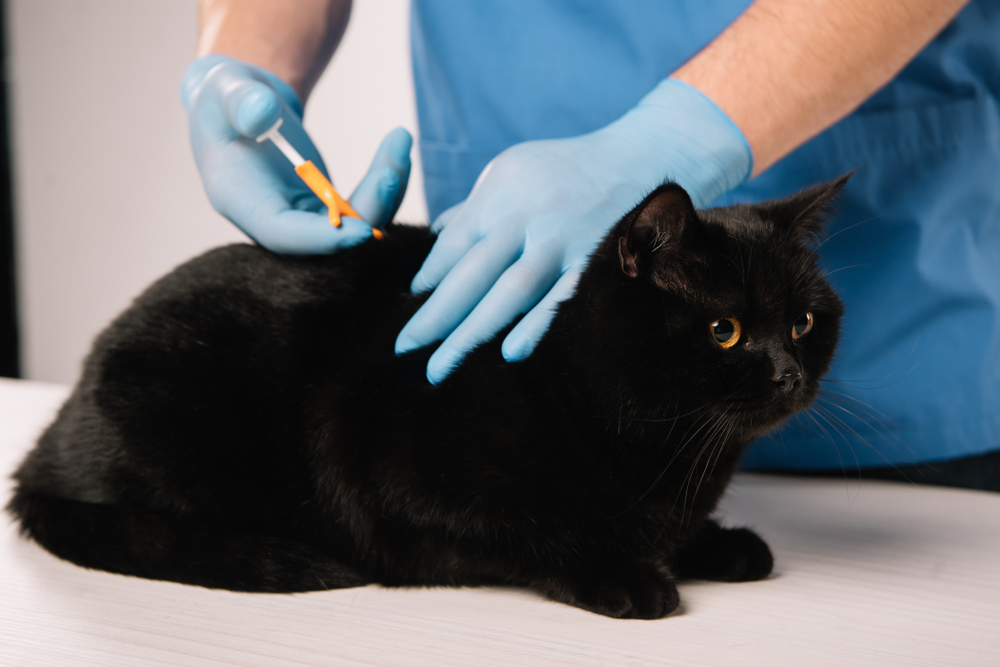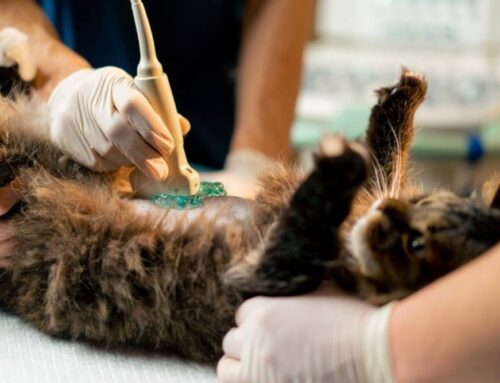At least one in three pets will go missing in their lifetime. Would your lost pet find their way home?
No matter how well behaved your pet, or how infrequently they go outside, they can easily be lost during an auto accident, natural disaster, or home emergency. Microchipping is safe, affordable, permanent identification that allows you to be contacted when your lost pet is found. Don’t leave your pet’s fate up to chance, or assume it won’t happen to your pet—collars can slip off, tags may break, but microchips are forever. Here’s what Village Animal Hospital wants you to know about microchipping your pet.
Pet microchips are a simple and safe technology
Although the idea of a foreign object placed under your pet’s skin may sound like science fiction, microchips are incredibly safe, and have been used since the 1990s. Microchips are biocompatible, cause little to no reaction in the body, and contain basic radio frequency identification technology (RFID). The microchip is a passive device, activated only by a microchip scanner operating on the same frequency. The only information stored on the chip is a unique pre-programmed 9- to 15-digit identification number. The microchip does not emit a steady signal or battery, and does not have GPS capability, so cannot be used to track your pet’s coordinates.
Your pet can be microchipped at a routine appointment
Microchipping is a simple and quick process, equivalent to a vaccination, where the tiny chip is implanted in the loose skin behind your pet’s shoulder blades. Your pet may experience momentary discomfort on implantation, as a larger needle is required to place the rice-grain-sized microchip beneath the skin. Some owners report tenderness at their pet’s injection site, but that usually resolves in 24 hours. Over time, natural scarring adheres the chip to the body’s connective tissue. Some microchips are palpable under the skin, which is completely normal.
To be effective, your pet’s microchip must be registered
When your pet’s microchip is registered with a database or recovery service, your pet’s unique identification number is linked to your contact information, ensuring you can be contacted when your pet is found. Your pet’s microchip company is often the best place to enroll your pet. Other registries, such as AKC Reunite and 24 Hour Pet Watch, register all microchip brands. Most registries provide lifetime enrollment for a one-time fee, and offer additional services with annual membership.
However, registering the microchip does no good if the owner’s contact information is incorrect. Sadly, only 42 percent of implanted microchips are properly registered to pet owners. The remaining 58 percent of pets have unlisted microchips with no owner information. Pets with unregistered chips must wait at the shelter until, hopefully, their owner finds them.
Keep your pet’s database information current and provide multiple methods of contact
Your pet’s microchip profile can contain as much or as little information as you choose. This information is kept private in the database, and released only when your missing pet’s chip is scanned at a veterinary hospital or animal shelter. At a minimum, we recommend including a primary and alternate phone number, a secondary contact, and your email address, to ensure you can be notified.
Your pet’s profile can be easily updated online or by phone for no charge. Update your pet’s information any time you relocate or change phones, or to add additional contacts. Some registries allow you to list health conditions, such as seizures, diabetes, or daily medication requirements, so the finder can know your pet’s needs.
Check your pet’s chip annually at Village Animal Hospital to ensure proper function
Once your pet is microchipped and enrolled in a registry, their chip should be scanned at their annual examination. Scanning takes only a moment, and confirms the chip is in proper working order, and has not migrated from its original position. On rare occasions, microchips can move away from the implantation site between the shoulder blades and migrate to the shoulder blade or forearm. This migration is harmless, but a chip that strays too far from the original location may not be found by an animal shelter or clinic. For these rare occurrences, a second chip may be recommended.
Keep a visible collar or harness and tags on your pet
Microchips do not replace your pet’s collar and tags. Visual identification will always be your pet’s first and fastest chance at returning home. Check your pet’s tags regularly for wear and legibility, and replace missing or broken tags. For a quieter option, consider a flat slide-on collar tag, or a collar embroidered with your contact information.
Microchips are required for international pet travel

Most countries outside the United States require pet microchips that are compatible with a specific frequency known as ISO (International Standards Organization). If you are planning a trip with your pet, contact the microchip manufacturer to determine ISO compatibility, and the United States Department of Agriculture for your destination’s pet health requirements.
Microchipping your pet provides affordable and invaluable peace of mind. Although anything can happen to a lost pet, one thing is for certain—a microchipped pet has everything they need for their best chance of returning home. To schedule your pet’s microchip appointment, or to check their chip, contact Village Animal Hospital.








Leave A Comment